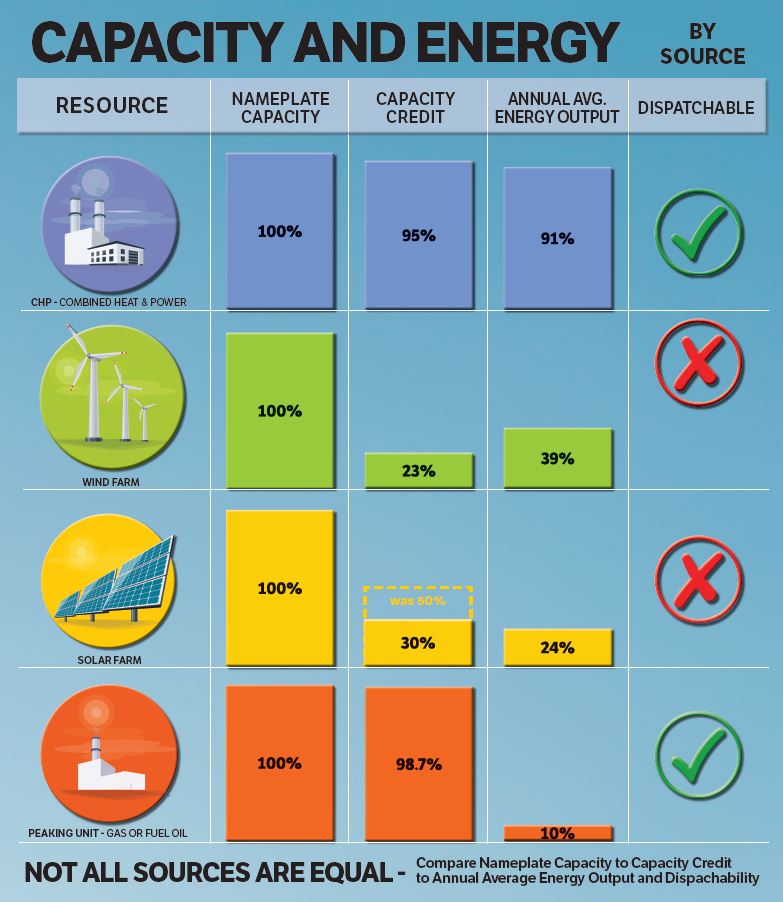Is the energy output from renewables the same as the energy output from fossil fuels?
It is not. The energy produced from renewable resources does not provide the same output as those from fossil fuel resources. For example, solar production operates at about 24.5% capacity factor. That means 100 megawatts (MW) of installed solar would only average about 24.5 megawatt hours (MWh) of average energy output over the course of a year. On the other hand, 100MW of installed gas or coal-fired capacity generates 80-90 MWh of average energy output over a course of the year.

Another important factor is what is called “intermittency”. Renewable energy sources are intermittent – meaning they can only produce energy when the sun is shining, or the wind is blowing – unless an expensive and expansive battery system is included. In contrast, fossil fuels are “dispatchable”, or, can be turned on or off as needed. A gas or coal-fired unit can be dispatched as needed to serve customers’ needs any time of the day and any time of the year.
To maintain reliability, a significant “over-build” of a renewable installation (solar arrays or wind turbines) would be necessary. At this time, the most practical solution would include renewables along with dispatchable gas and/or coal generation to achieve a balance of high reliability, low cost, and a reduction of carbon emissions.













